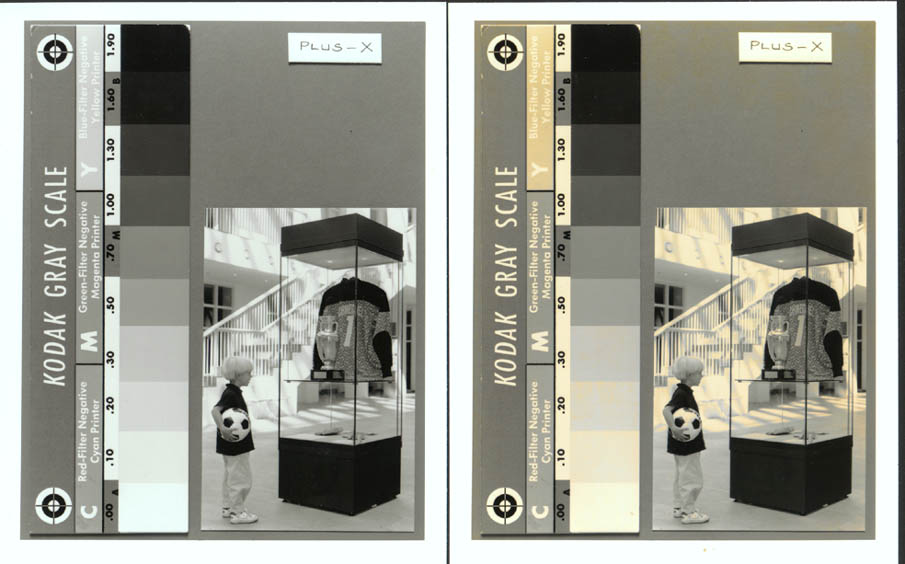|
by Morten Ryhl-Svendsen
Oxidizing gases are known to have the potential to bleach out photographic silver images. Especially microfilm and modern resin-coated b/w prints has been observed to undergo this type of deterioration. Freshly painted walls, noticeboards made of chipboard, or low quality paper sleeves are typical sources of attacking oxidizing compounds. The deterioration pattern is formation of tiny red spots, which gives certain greytones of the image an brown/yellow hue. Strong attacks may almost entirely bleach out the image. In some instances the oxidative attack can also arise from light-induced generation of peroxides in the titanium dioxide pigmented polyethylene layer of a RC-print. Silver photographs can be protected from oxidizing gases by adding a toning treatment to the development process. By toning with selenium, sulphur, or gold the less stable metallic silver is converted to more stable compounds. In the past toning was almost always carried out on photographs, especially because of aestetic reasons (toning also changes the hue of the image, this is why old photographs often are brown). But today this extra step of the process is often left out. The toning technique is more or less forgotten, except by some fine print photographers and by producers of archival materials (microfilms etc.) |

Illustrations © Morten Ryhl-Svendsen, 2001. Original photo by John Lee, National Museum of Denmark |
|
The above illustration shows two test photographic prints, which are of a type used at
the National Museum of Denmark for a number of different purposes. The image
of one print consists of a Kodak grey scale, a photographic image
representing a large range of greytones, arranged on a Kodak grey card.
The prints were developed on Ilford Multigrade RC paper, on an Ilford development machine. The prints has been processed to archival standard, this means that the level of residual chemicals (hypo) in the prints was within the standards given by ANSI and ISO. Only with these two prints the toning bath was left out. Before this experiment the prints were identical both in colour and density. The print to the right has been pinned to a chipboard notice board for six months, in a class room at the Danish School of Conservation. During the same time the print to the left was kept in an acid-free pure alpha-cellulose sleeve as a reference (inert environment). The print pinned to the notice board did strongly change in the colour of the lighter greytones, from neutral grey to yellow. The overall density range of the print also decreased, this means that the print has bleached out, or the light areas has darkend, or both. Even though this test was carried out deliberately to provoke this decay of the test print, nothing was done to force the attack. The deterioration on this, except from the missing toning treatment otherwise perfect photographic material, is what anyone should expect on silver images placed in low quality folders etc. The discolouration of this print took six months, probably because the chipboard is only emitting low quantities of oxidizing gases. If the level of oxidizing compounds is high, like just after the walls has been painted in a gallery, the bleaching out of a photograph can happen overnight! One could argue that the discolouration of the test print could be caused by other sources, e.g. chemicals used in the class room, or car exhaust from outside. While this indeed could be true, I have, however, repeated the experiment several times at a number of different notice boards in different buildings - with the same result each time. And the picture on the test photograph? The cup the boy is admirering is the 1st prize won by Denmark in the European Soccer Championship 1992. The shirt belonged to Peter Schmeichel, the Danish goal keeper. Both items was exhibited at the hall of the Danish Museum after the victory in 1992.
|
| [ Page up ] | [ Home ] | [ Search ] | [ Webmaster ] |
IAQ in Museums and Archives, May 6th, 2001